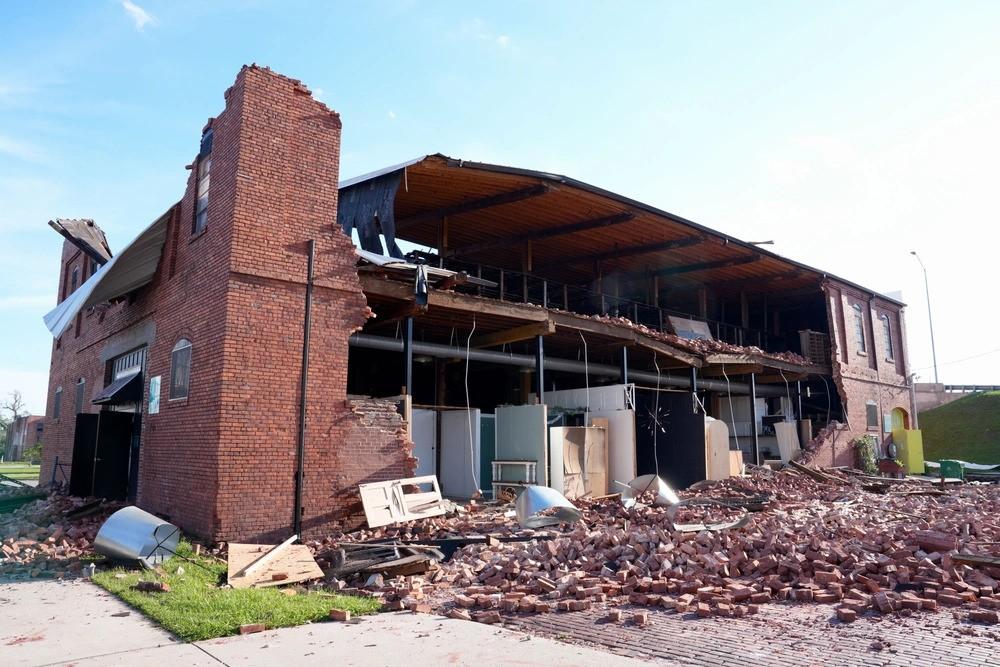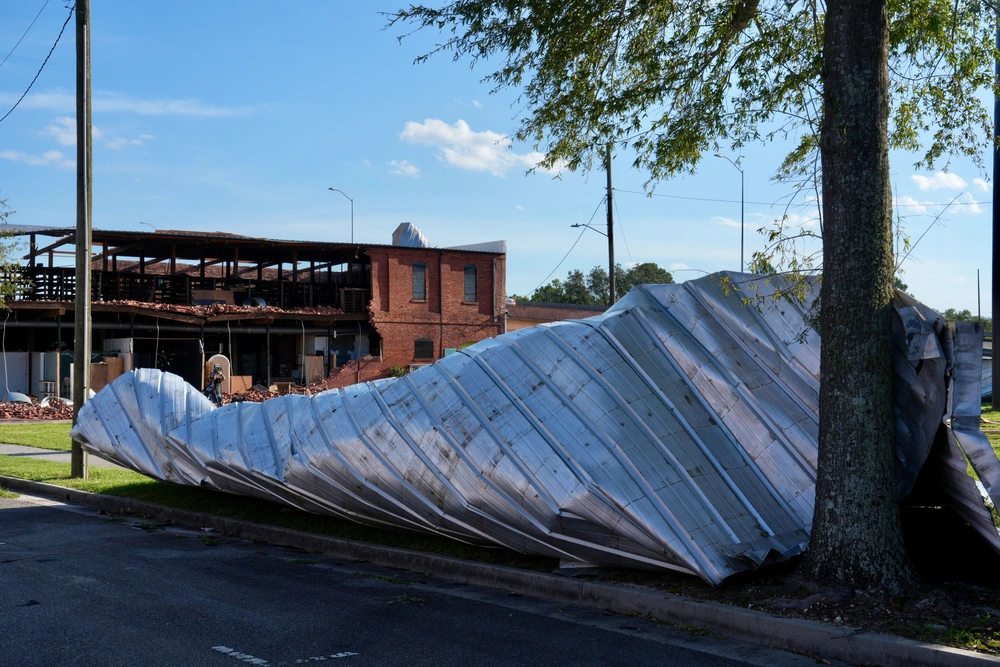Small Business Support to Rebuild
Hurricane Helene swept through our coastal towns, leaving a trail of devastation in its wake. The storm’s relentless force shook the foundations of small businesses, which are the heartbeat of our local communities. However, in true resilient spirit, small businesses are on the path to recovery and rebuilding stronger than ever. From corner cafes to family-owned shops, many are finding innovative ways to overcome challenges, and with community support, economic disaster recovery is at the forefront.
Impact of Hurricane Helene on Local Businesses
Hurricane Helene made an indelible mark on local communities, leaving a trail of devastation that impacted lives and livelihoods. As local businesses looked to open their doors once more, they faced a road riddled with challenges. Let’s take a closer look at how the hurricane affected these businesses and the hurdles they faced in the aftermath.
Damage Assessment: Understanding the Extent
The first step in bouncing back for many business owners was to understand the full extent of the damage inflicted by Hurricane Helene. Buildings and inventories were battered and soaked, often beyond recognition. Structural damage was widespread, leaving many storefronts with shattered windows, damaged roofs, and waterlogged interiors. However, damage wasn’t confined just to the physical; technology infrastructures like computers, servers, and data were also hit hard, disrupting operations even further.
Businesses conducting their own assessments or working with professionals discovered varying degrees of destruction. For the worse hit, entire operations ground to a halt, necessitating a complete rebuild. Others were lucky with less severe impacts, requiring repairs but still able to function at reduced capacity. Such assessments have been crucial in formulating targeted recovery strategies tailored to each business’s specific needs.
Immediate Effects on Operations
For businesses affected by Hurricane Helene, it wasn’t long after the storm passed that the reality of its impacts were felt on daily operations. The immediate aftermath saw:
–
Interrupted Supply Chains: Deliveries were delayed as roads were obstructed, and warehouses were damaged, causing stock shortages.
–
Reduced Workforce Availability: Employees dealing with personal losses or commuting challenges found it difficult to return to work promptly.
–
Customer Foot Traffic Decrease: Fewer customers ventured out, resulting in diminished sales for brick-and-mortar businesses.
These interruptions forced many business owners to pivot quickly. For some, this meant focusing on online sales or adjusting business hours. Others had to temporarily shutter their businesses, awaiting the resources needed to kickstart operations again.
Financial Challenges and Losses
The economic toll on local businesses post-Hurricane Helene has been steep. Financial challenges are among the most significant obstacles on their path to recovery. Businesses face various financial pressures, such as:
–
Revenue Losses: With operations disrupted, businesses saw steep declines in revenue streams, often with no contingency funds to fall back on.
–
Rising Repair Costs: From fixing damaged structures to replacing equipment and restocking inventory, expenses quickly piled up.
–
Insurance Complications: Navigating claims processes or discovering a lack of adequate coverage added another layer of financial strain.
Without immediate income, many business owners turned to savings or sought loans, while anxiously waiting on insurance payouts and governmental assistance. The financial challenges compounded quickly, with recovery seeming like a distant reality for many.
Strategies for Economic Recovery
Despite the devastation, the resilience of community members to rebuild and recover their local economy shines through. Various strategies and initiatives have been put in place to help these businesses rise again.
Government Aid and Support Programs
In response to the disaster, government agencies moved to action with aid and support programs aimed squarely at helping local businesses stand on their feet again. This assistance has included:
–
Financial Grants and Loans: Various financial aids were offered to help businesses cover immediate expenses, re-stock, and rebuild.
–
Tax Breaks and Incentives: Governments provided relief in the form of deferred tax payments and reduced rates to alleviate the financial burden.
–
Advisory Services: Workshops and webinars focusing on financial planning were made available to help businesses navigate their recovery plans.
These programs are a lifeline, providing businesses with the means and expertise to start afresh and look towards a more stable future.
Community-led Initiatives and Collaborations
One of the most heartening aspects of recovery has been the community-led initiatives that have sprung up in response to the hurricane’s devastation. Neighbors have banded together with remarkable initiatives aimed at bringing life back to local businesses:
–
Buy Local Campaigns: Residents rallied to support their hometown businesses by prioritizing purchases from local shops.
–
Crowdfunding Efforts: Online platforms became a hub for raising funds, allowing supportive patrons from near and far to contribute directly to recovery efforts.
–
Partnerships and Collaborations: Businesses joined forces, sharing resources and facilities to keep operations moving and customers satisfied.
Such initiatives have played a significant role in fostering community spirit and ensuring that the wheels of commerce continue to turn.
Leveraging Technology for Growth
As businesses rebuild, many have turned to technology as a vital tool for recovery and growth. Technologies such as e-commerce platforms allow businesses to reach broader audiences beyond the damaged local neighborhoods. Furthermore, adopting social media for robust marketing efforts has kept communities engaged and updated on new developments or services. Businesses have implemented cloud storage and backup solutions as well, ensuring data resilience even in the face of future disasters.
Embracing such technologies has not only aided in immediate recovery efforts but also paved the way for modernized operations and expanded business horizons, setting a foundation for thriving in the digital landscape.
Innovative Adaptations
In the face of adversity, innovation often leads the way. Several local businesses embraced creative adaptations that not only helped them recover but also set them up for future success.
–
Flexible Work Hours: Many businesses adapted to flexible work hours to accommodate employees dealing with personal recovery tasks, thus maintaining staffing levels and preserving morale.
–
Collaborative Efforts: Businesses formed partnerships to share resources, such as delivery services or workspace. These collaborations not only reduced costs but also fostered a sense of community solidarity.
–
Sustainability Focus: Emphasizing environmentally conscious rebuilding, some businesses adopted sustainable construction practices and energy-efficient technologies as part of their recovery efforts.
Lessons Learned and Best Practices
The recovery process after Hurricane Helene has been a learning experience for all involved. Here are some key takeaways and best practices that emerged:
–
Diversified Revenue Streams: Businesses that had multiple revenue streams, like e-commerce or subscription models, were better equipped to weather the storm’s aftermath.
–
Emergency Contingency Plans: Having a comprehensive disaster preparedness plan in place made a significant difference. Those who planned ahead were able to respond more effectively and reduce operational downtime.
–
Strong Community Networks: Building and maintaining strong community relationships proved invaluable. Support from loyal customers, local organizations, and other businesses helped speed up recovery.
Future Preparedness and Resilience Building
While the recovery from Hurricane Helene is ongoing, it’s crucial to look ahead and fortify our communities for any future challenges. Strengthening resilience is key to ensuring local businesses withstand potential future disruptions with vigor and determination.
–
Enhancing Risk Management: Encouraging businesses to evaluate their current risk management strategies can help identify vulnerabilities and ways to mitigate them. Regularly updating these plans is essential as circumstances and risks evolve.
–
Investing in Infrastructure: Encouraging investment in robust infrastructure can minimize the impact of future disasters. Communities and businesses should collaborate on fortifying buildings against natural disasters and improving essential services.
–
Community Training and Resources: Offering community-based training programs can equip business owners and employees with the necessary skills and resources for rapid response and recovery efforts. Workshops on financial planning, digital marketing, and mental health support can foster a more resilient business environment.
–
Technology Integration: Leveraging technology can bolster disaster readiness. Cloud-based systems, digital communication platforms, and robust online sales infrastructures can provide continuity in times of crisis.
–
Government and Financial Support: Advocating for stronger government-backed initiatives and financial support systems can ensure local businesses receive timely aid. Grants, loans, and tax incentives can ease the financial burden of rebuilding.
As we move forward, it is clear that resilience intertwined with innovation is a recipe for success. By learning from past experiences and fortifying future preparedness, local businesses can look forward to thriving well beyond the shadow of Hurricane Helene. Let’s support these resilient entrepreneurs as they rebuild stronger, smarter, and with a renewed sense of community spirit.
Help for Small Businesses Recovering from Hurricane Helene
In the wake of Hurricane Helene, local businesses have shown remarkable resilience and determination. With the support of their communities and innovative strategies, these businesses are on the road to recovery. Remember, every small purchase, review, or word of encouragement can help these community pillars bounce back even stronger. Let’s continue to support them in every way possible, and together, we’ll build a more resilient and vibrant future for our local economies.
American Steel Core Builders offers a vital solution for businesses looking to rebuild stronger and more resilient after Hurricane Helene. Their
steel frame commercial buildings are designed to withstand hurricane winds of up to 178 miles per hour, providing unmatched protection against the devastating effects of future storms. Impervious to water and fire damage, these buildings ensure long-term durability, while also resisting common threats like termites and other pests. By choosing American Steel Core Builders, businesses can rebuild with confidence, knowing they are investing in structures that prioritize safety, sustainability, and peace of mind for the future.
Contact us today to find how how we can help rebuild your business stronger and faster than anyone else!

